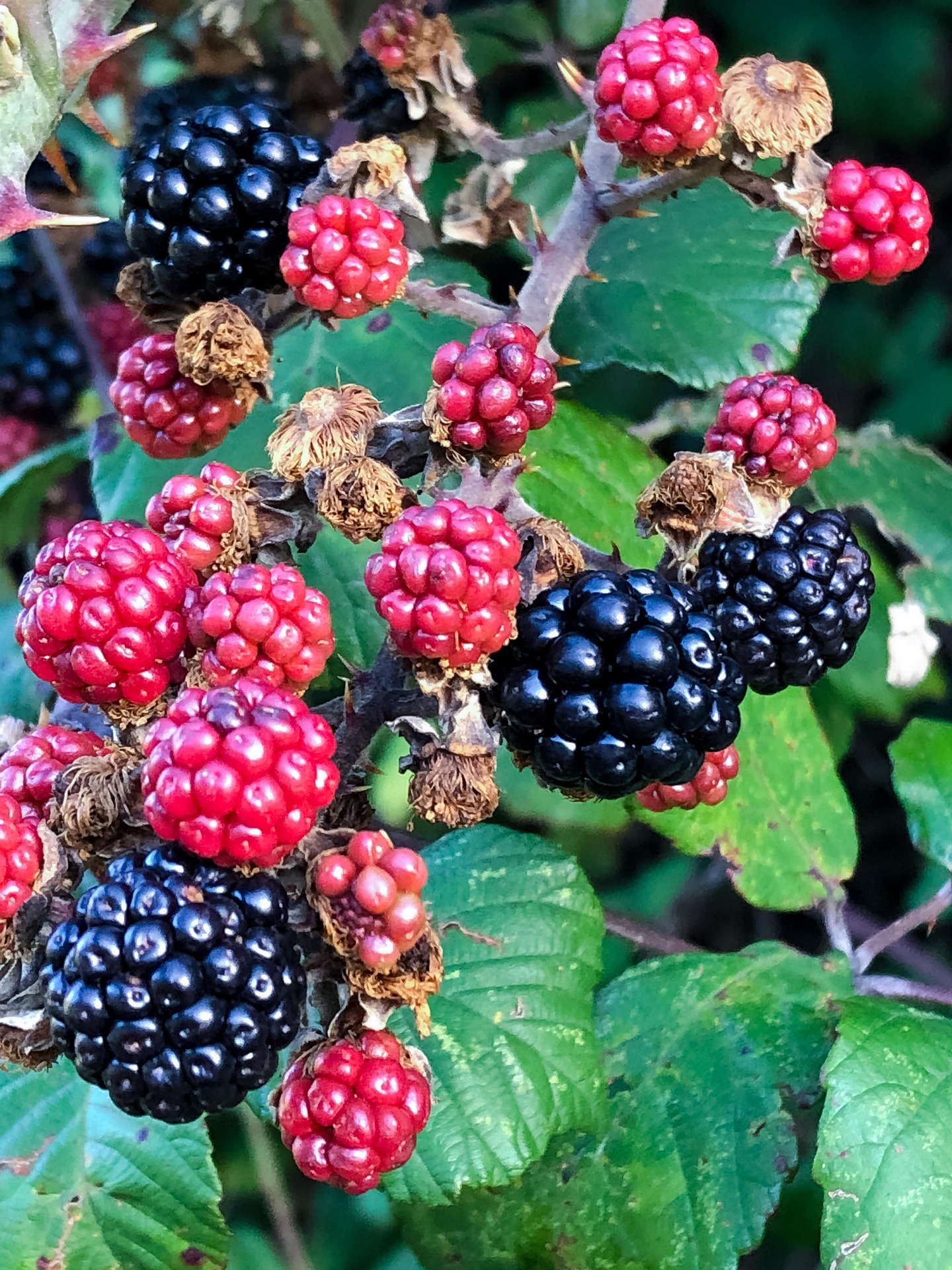The main difference between primocane and floricane blackberries lies in when they produce fruit and the age of the canes (stems) that bear the fruit:
Primocane Blackberries (also called “fall-bearing” or “everbearing”):
- Fruit on first-year canes: They produce fruit on new growth (called primocanes) during late summer to fall of the same year they emerge.
- Many primocane varieties can also produce a smaller summer crop on the same canes the following year.
- Examples: ‘Prime-Ark® Freedom’, ‘Prime-Ark® Traveler’.
Floricane Blackberries:
- Fruit on second-year canes: They bear fruit on canes that are in their second year (called floricanes).
- Fruiting typically occurs in late spring to early summer, then the canes die back after fruiting.
- The plant sends up new primocanes each year, which fruit the following year.
- Examples: ‘Triple Crown’, ‘Chester’.
Summary Table:
| Feature | Primocane | Floricane |
|---|---|---|
| Fruits on | First-year canes | Second-year canes |
| Main harvest time | Late summer to fall | Late spring to early summer |
| Maintenance | Simpler (can mow down all canes) | More complex pruning (retain 1-year-old canes) |
| Yield | Often slightly lower overall | Usually higher in peak season |
The best primocane varieties
1. Prime-Ark® Freedom
- Highlights: First thornless primocane blackberry.
- Fruit: Large, firm, good flavor.
- Ripening: Early primocane crop (July–August in warm climates).
- Best for: Fresh eating; minimal pruning (cut all canes in winter).
- Notes: Performs better in warmer climates (Zones 6–9).
2. Prime-Ark® Traveler
- Highlights: Thornless, improved shipping and storage.
- Fruit: Medium-large, firm, good flavor.
- Ripening: Slightly later than Freedom.
- Best for: Commercial markets and growers needing good shelf life.
- Notes: Very productive in USDA Zones 6–8.
3. Prime-Ark® 45
- Highlights: First primocane variety released.
- Fruit: Good size, excellent flavor, firmer than Freedom.
- Ripening: Productive in both primocane and floricane seasons.
- Best for: Commercial growers wanting dual harvests.
- Notes: Has thorns; great flavor.
4. Prime-Ark® Horizon (newest release)
- Highlights: High fruit quality, strong flavor, and heat tolerance.
- Fruit: Very firm, good size, improved sweetness.
- Ripening: Late summer to fall on primocanes.
- Best for: Warm regions and late-season fresh markets.
- Notes: Still relatively new, showing great promise.
Summary Table:
| Variety | Thornless | Fruit Flavor | Fruit Size | Best Use | Zone |
|---|---|---|---|---|---|
| Prime-Ark® Freedom | ✅ | Good | Large | Home gardens, fresh | 6–9 |
| Prime-Ark® Traveler | ✅ | Good | Medium-Lg | Shipping, commercial | 6–8 |
| Prime-Ark® 45 | ❌ | Excellent | Medium-Lg | Dual crop, fresh/frozen | 6–8 |
| Prime-Ark® Horizon | ✅ | Very Good | Large | Fresh, late season | 6–9 |
What about Floricane, which one is better
The best floricane (summer-bearing) blackberry varieties are known for high yield, great flavor, and vigorous growth, especially in temperate climates. These varieties produce fruit on second-year canes and are generally better suited for large summer harvests, whether for home use or commercial farming.
Here are some of the top floricane blackberry varieties:
1. Triple Crown
- Highlights: One of the most popular thornless varieties.
- Fruit: Large, very sweet, juicy, and firm.
- Ripening: Mid to late summer (July–August).
- Best for: Home gardeners and U-pick farms.
- Notes: Semi-erect growth habit—benefits from trellising.
2. Chester Thornless
- Highlights: Extremely productive and disease resistant.
- Fruit: Medium to large, mildly sweet, stores well.
- Ripening: Late season (August).
- Best for: Commercial growers, storage, and freezing.
- Notes: Cold hardy and very dependable.
3. Natchez
- Highlights: Early ripening with huge berries.
- Fruit: Very large, sweet-tart, slightly seedy.
- Ripening: Early summer (June).
- Best for: Fresh eating, early market sales.
- Notes: Thornless; needs support for long trailing canes.
4. Ouachita (pronounced “Wash-i-taw”)
- Highlights: Early ripening, erect canes, thornless.
- Fruit: Medium, firm, good flavor.
- Ripening: Early summer.
- Best for: Small growers and low-maintenance gardens.
- Notes: Good cold hardiness.
- Highlights: High yield, disease resistant, good storage.
- Fruit: Medium to large, sweet and firm.
- Ripening: Mid-season.
- Best for: Fresh market and home gardens.
- Notes: Thornless, upright growth—less trellis needed.
5. Arapaho
Summary Table:
| Variety | Thornless | Ripening Time | Fruit Size | Flavor | Growth Habit | Notes |
|---|---|---|---|---|---|---|
| Triple Crown | ✅ | Mid-late summer | Large | Sweet & juicy | Semi-erect | Excellent overall performer |
| Chester Thornless | ✅ | Late summer | Medium-Large | Mild-sweet | Semi-erect | Great for cold climates |
| Natchez | ✅ | Early summer | Very large | Sweet-tart | Trailing | Needs support |
| Ouachita | ✅ | Mid-summer | Medium-Large | Sweet | Upright | Low maintenance |
| Arapaho | ✅ | Early summer | Medium | Mild-sweet | Upright | Good for small gardens |

No responses yet